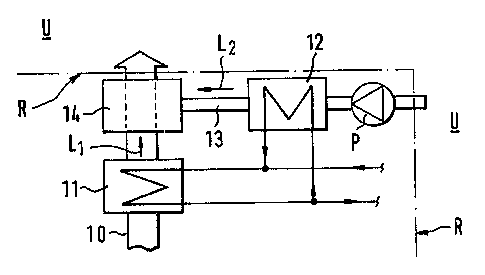Some of the information on this Web page has been provided by external sources. The Government of Canada is not responsible for the accuracy, reliability or currency of the information supplied by external sources. Users wishing to rely upon this information should consult directly with the source of the information. Content provided by external sources is not subject to official languages, privacy and accessibility requirements.
Any discrepancies in the text and image of the Claims and Abstract are due to differing posting times. Text of the Claims and Abstract are posted:
| (12) Patent: | (11) CA 2126896 |
|---|---|
| (54) English Title: | METHOD AND DEVICE FOR REDUCING FOG ARISING FROM HUMID EXHAUST AIR |
| (54) French Title: | DISPOSITIF PERMETTANT DE REDUIRE LA VAPEUR PROVOQUEE PAR L'AIR HUMIDE EXTRAIT D'UN BATIMENT ET METHODE CONNEXE |
| Status: | Expired and beyond the Period of Reversal |
| (51) International Patent Classification (IPC): |
|
|---|---|
| (72) Inventors : |
|
| (73) Owners : |
|
| (71) Applicants : |
|
| (74) Agent: | MARKS & CLERK |
| (74) Associate agent: | |
| (45) Issued: | 2008-08-12 |
| (22) Filed Date: | 1994-06-28 |
| (41) Open to Public Inspection: | 1995-01-02 |
| Examination requested: | 2001-05-01 |
| Availability of licence: | N/A |
| Dedicated to the Public: | N/A |
| (25) Language of filing: | English |
| Patent Cooperation Treaty (PCT): | No |
|---|
| (30) Application Priority Data: | ||||||
|---|---|---|---|---|---|---|
|
A method and device for reducing the amount of fog arising from humid exhaust air entering into a outdoor environment. The exhaust air flow that is removed from a room, a building or a process is cooled, and thereafter a flow of mixing air is mixed with the exhaust air. The partially or fully combined air flows is then passed outdoors without substantially producing fog.
Un procédé et un dispositif pour réduire la quantité du brouillard résultant de l'air humide évacué entrant dans un environnement extérieur. L'écoulement d'air évacué qui est retiré d'une chambre, d'un bâtiment ou d'un processus est refroidi, et par la suite un écoulement de mélange d'air est combiné avec l'air évacué. L'écoulement d'air partiellement ou complètement combiné est évacué à l'extérieur sans créer un important effet de brouillard.
Note: Claims are shown in the official language in which they were submitted.
Note: Descriptions are shown in the official language in which they were submitted.

2024-08-01:As part of the Next Generation Patents (NGP) transition, the Canadian Patents Database (CPD) now contains a more detailed Event History, which replicates the Event Log of our new back-office solution.
Please note that "Inactive:" events refers to events no longer in use in our new back-office solution.
For a clearer understanding of the status of the application/patent presented on this page, the site Disclaimer , as well as the definitions for Patent , Event History , Maintenance Fee and Payment History should be consulted.
| Description | Date |
|---|---|
| Time Limit for Reversal Expired | 2013-06-28 |
| Letter Sent | 2012-06-28 |
| Grant by Issuance | 2008-08-12 |
| Inactive: Cover page published | 2008-08-11 |
| Inactive: Final fee received | 2008-05-21 |
| Pre-grant | 2008-05-21 |
| Notice of Allowance is Issued | 2007-12-06 |
| Letter Sent | 2007-12-06 |
| Notice of Allowance is Issued | 2007-12-06 |
| Inactive: Approved for allowance (AFA) | 2007-11-23 |
| Amendment Received - Voluntary Amendment | 2007-06-11 |
| Inactive: S.30(2) Rules - Examiner requisition | 2006-12-12 |
| Amendment Received - Voluntary Amendment | 2006-04-21 |
| Inactive: IPC from MCD | 2006-03-11 |
| Inactive: S.30(2) Rules - Examiner requisition | 2005-10-24 |
| Amendment Received - Voluntary Amendment | 2004-09-02 |
| Inactive: S.29 Rules - Examiner requisition | 2004-03-08 |
| Inactive: S.30(2) Rules - Examiner requisition | 2004-03-08 |
| Inactive: First IPC assigned | 2003-11-28 |
| Inactive: IPC removed | 2003-11-28 |
| Inactive: IPC assigned | 2003-11-28 |
| Letter Sent | 2001-09-13 |
| Inactive: Status info is complete as of Log entry date | 2001-06-18 |
| Letter Sent | 2001-06-18 |
| Inactive: Application prosecuted on TS as of Log entry date | 2001-06-18 |
| All Requirements for Examination Determined Compliant | 2001-05-01 |
| Request for Examination Requirements Determined Compliant | 2001-05-01 |
| Application Published (Open to Public Inspection) | 1995-01-02 |
There is no abandonment history.
The last payment was received on
Note : If the full payment has not been received on or before the date indicated, a further fee may be required which may be one of the following
Please refer to the CIPO Patent Fees web page to see all current fee amounts.
Note: Records showing the ownership history in alphabetical order.
| Current Owners on Record |
|---|
| VALMET PAPER MACHINERY INC. |
| METSO PAPER, INC. |
| Past Owners on Record |
|---|
| ESKO LALLI |
| JUKKA KOTAJARVI |